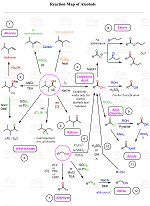Amides are the least reactive derivatives of carboxylic acids, so reducing them requires using the strong reducing agent LiAlH4. The reduction converts primary, secondary, tertiary cyclic, and acrylic amides to corresponding amines:
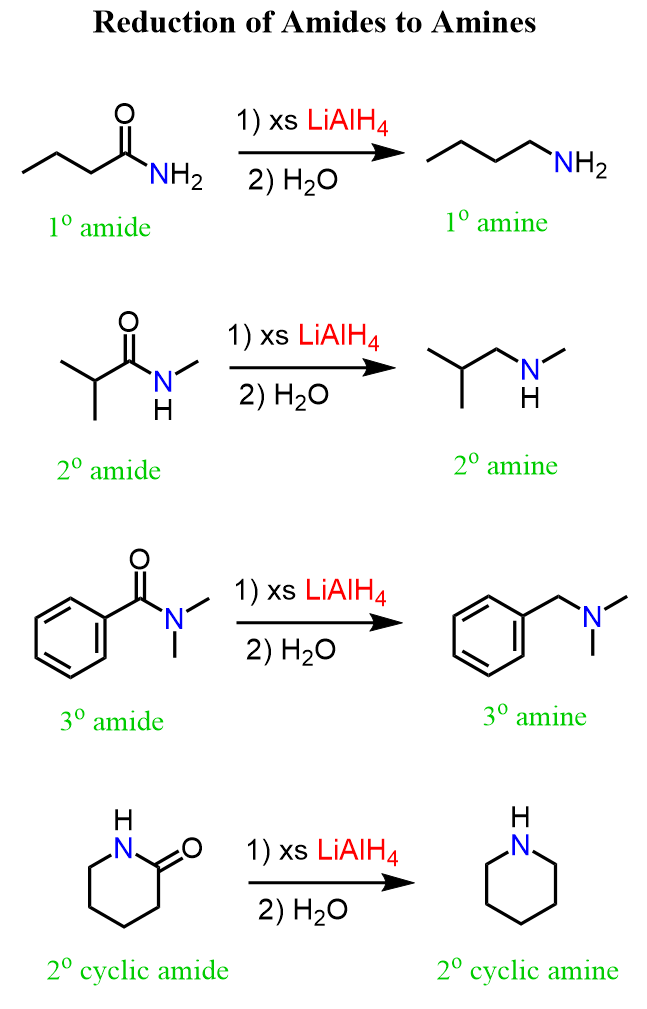
The Mechanism of Amide Reduction by LiAlH4
Primary and secondary amides have a proton connected to the nitrogen that is acidic enough to be attacked by the hydride. This step occurs before the nucleophilic addition of the hydride ion:
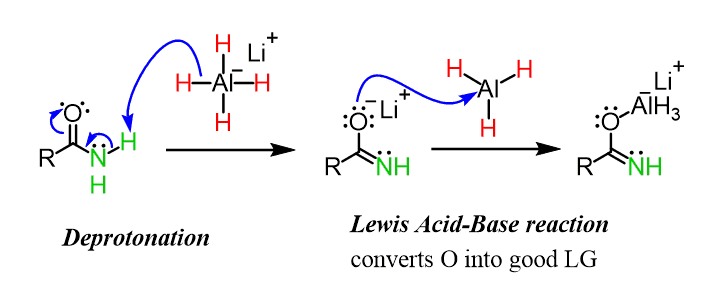
After the reaction with AlH3, the C=O oxygen I snow converted into a good leaving group and eliminated in the addition-elimination step:
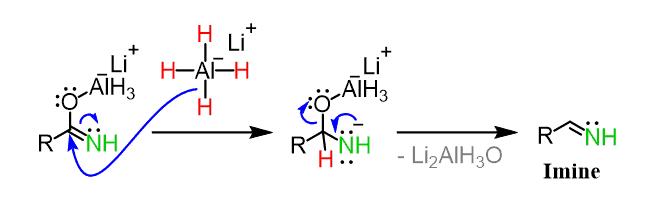
The C=N bond of the imine is then reduced just like any carbonyl group. In the last either water aqueous solution is used as a work-up.
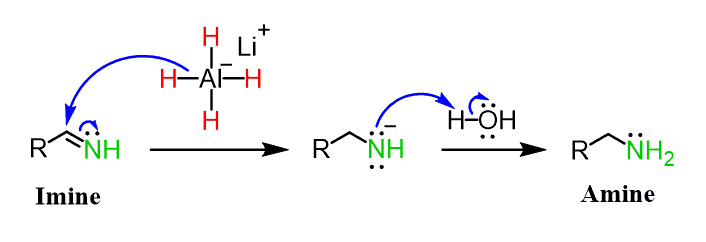
Putting all this together, here is what we get for the amide reduction mechanism:

This does look like too many steps for a reduction reaction and that’s why the initial deprotonation step is often omitted placing the emphasis on the reduction part itself:

Even though this may not be an accurate representation of the mechanism, it certainly is acceptable to many instructors. I am totally happy with this mechanism from my students, but double-checking with your instructors is always a good idea.
Reduction of Tertiary Amides with 9-BBN
9-BBN is a bulky alkyl borane that can be used for reducing tertiary amides to tertiary amines (Tetrahedron Letters, Vol. 38, No. 10, pp. 1717-1720, 1997.).
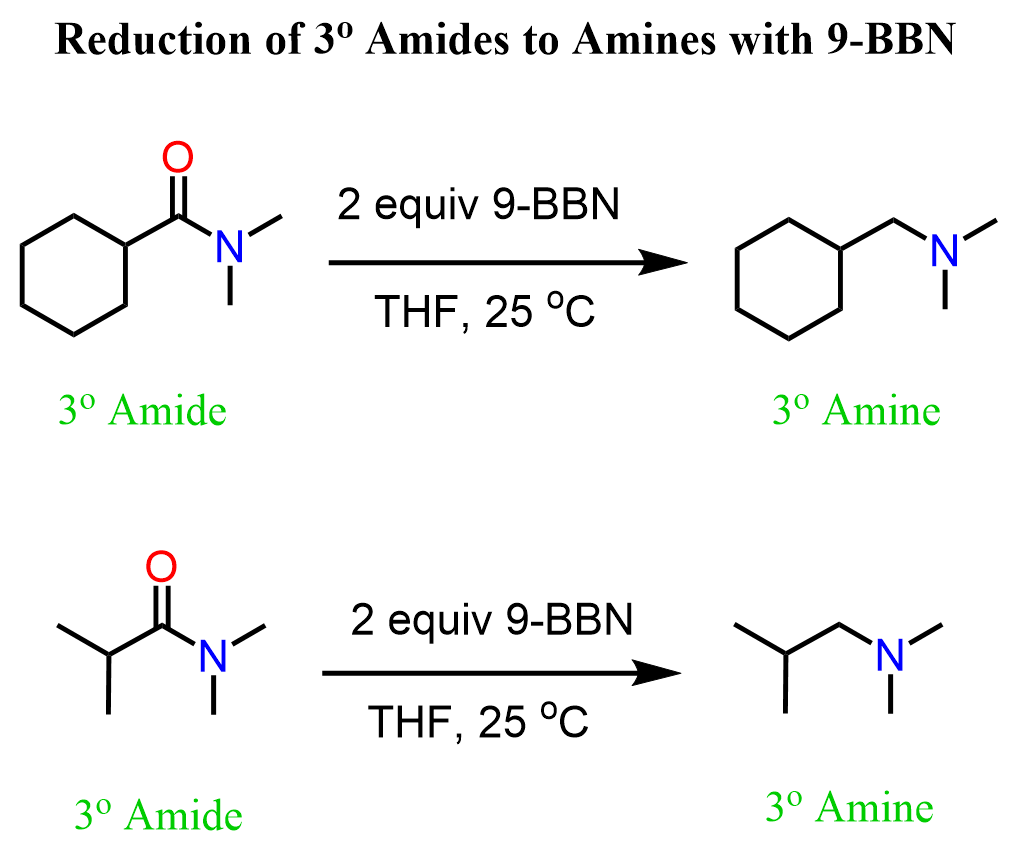
Recall that we have used 9-BBN earlier in the hydroboration-oxidation of alkynes.
The idea behind using alkyl borane or borohydrides in the reactions of alkenes, alkynes, and carbonyl compounds is the fact that boron has an empty p orbital which makes it electrophilic. The electron source can be any π bond, and when the electrons are added to the boron, it now becomes electron-rich which makes it a donor of a hydride ion. We have seen this in many reduction reactions with NaBH4, and also with BH3 (B2H6) for the reduction of carboxylic acids.
Taking into consideration all the patterns we have seen in the reduction reactions, let’s try to put together a plausible mechanism for the reduction of a tertiary amide to an amine:
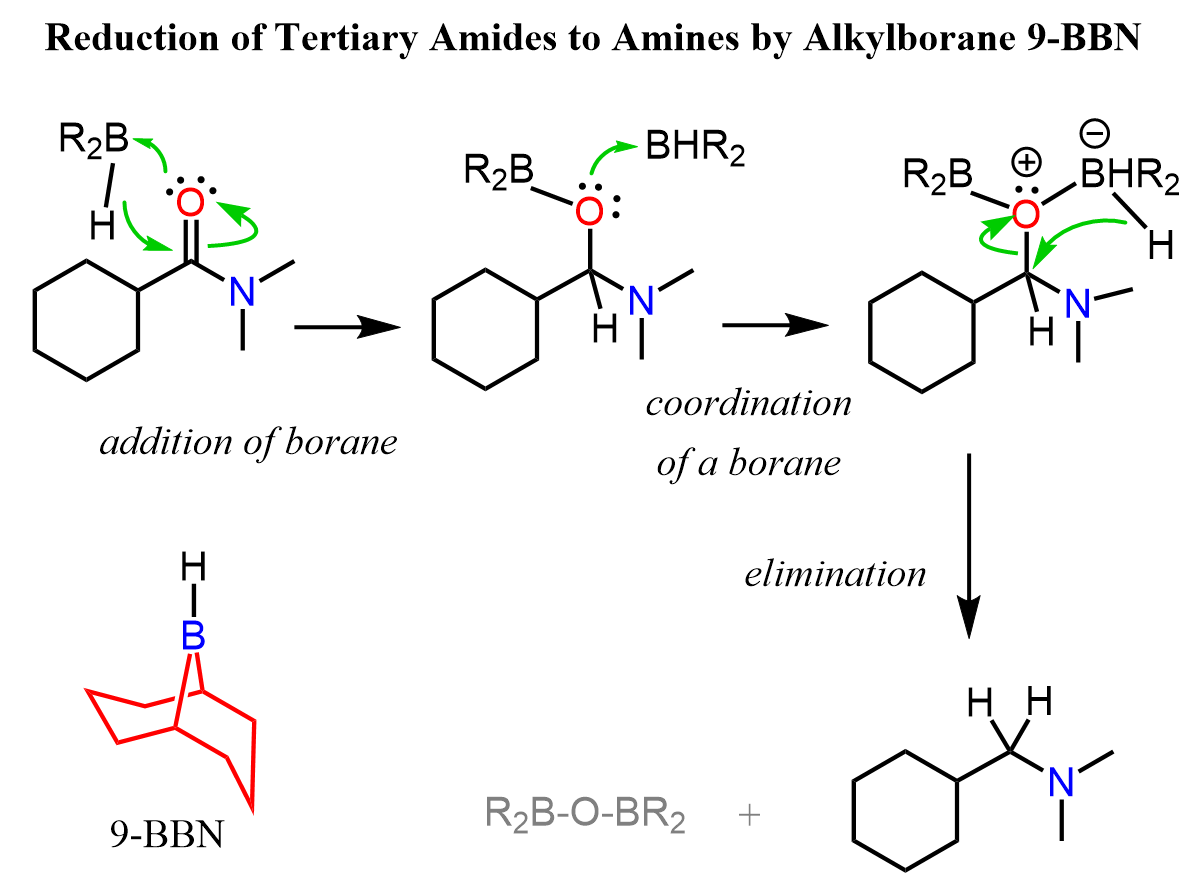
In the first step, we have an addition to the carbonyl via coordination of the boron forming a boronic ester intermediate. After another coordination, the boronic ester is converted into a good leaving group by the positively charged oxygen and it is kicked out by the second hydride addition.
An important question of why the reduction of secondary and primary amides is inefficient is answered by the coordination of the nitrogen to the boron. So, some steric hindrance is needed to prevent this which is achieved by the alkyl groups connected to the nitrogen (J. Am. Chem. Soc. 1970, 92, 24, 7161–7167).
Reduction of Tertiary Amides to Aldehydes
In the image shown earlier, we also included the structure of another bulky alkyl borane, Disiamylborane (bis(1,2-dimethylpropyl)borane) (Sia2BH). Although structurally very similar to 9-BBN, it has been shown to successfully reduce tertiary amides to aldehydes:
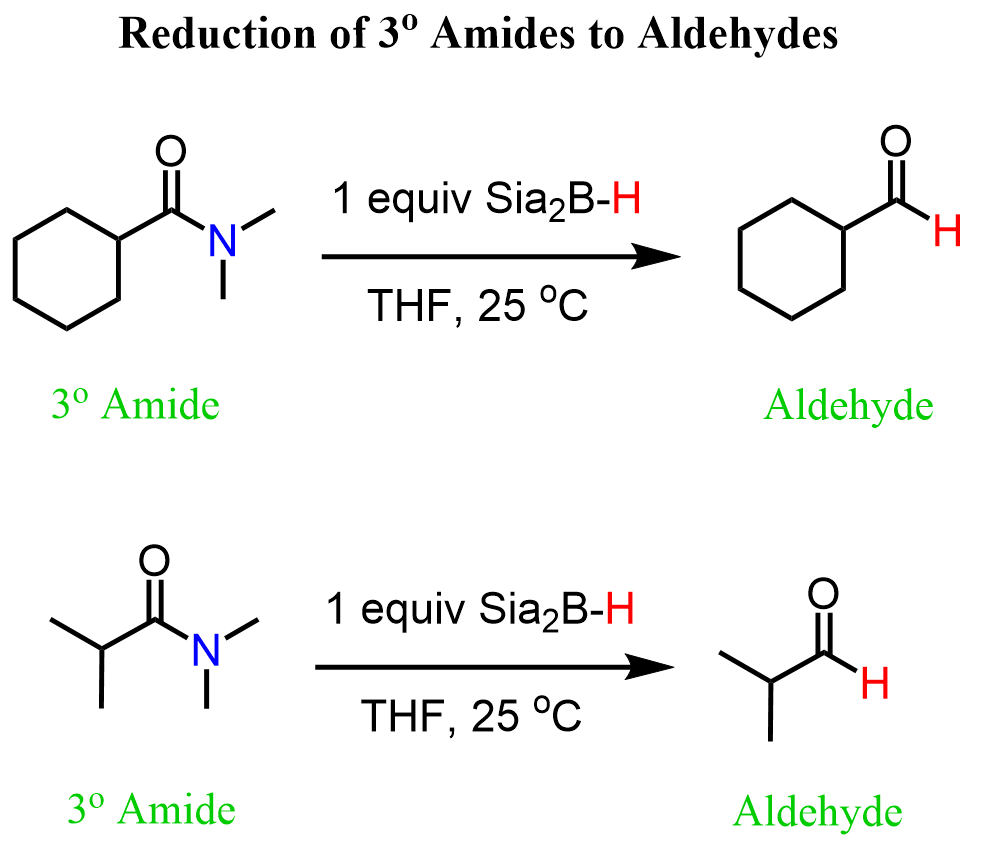
This means the second hydride addition does not occur and the hydrolysis of the boronic ester intermediate gives the corresponding aldehyde as the final product:
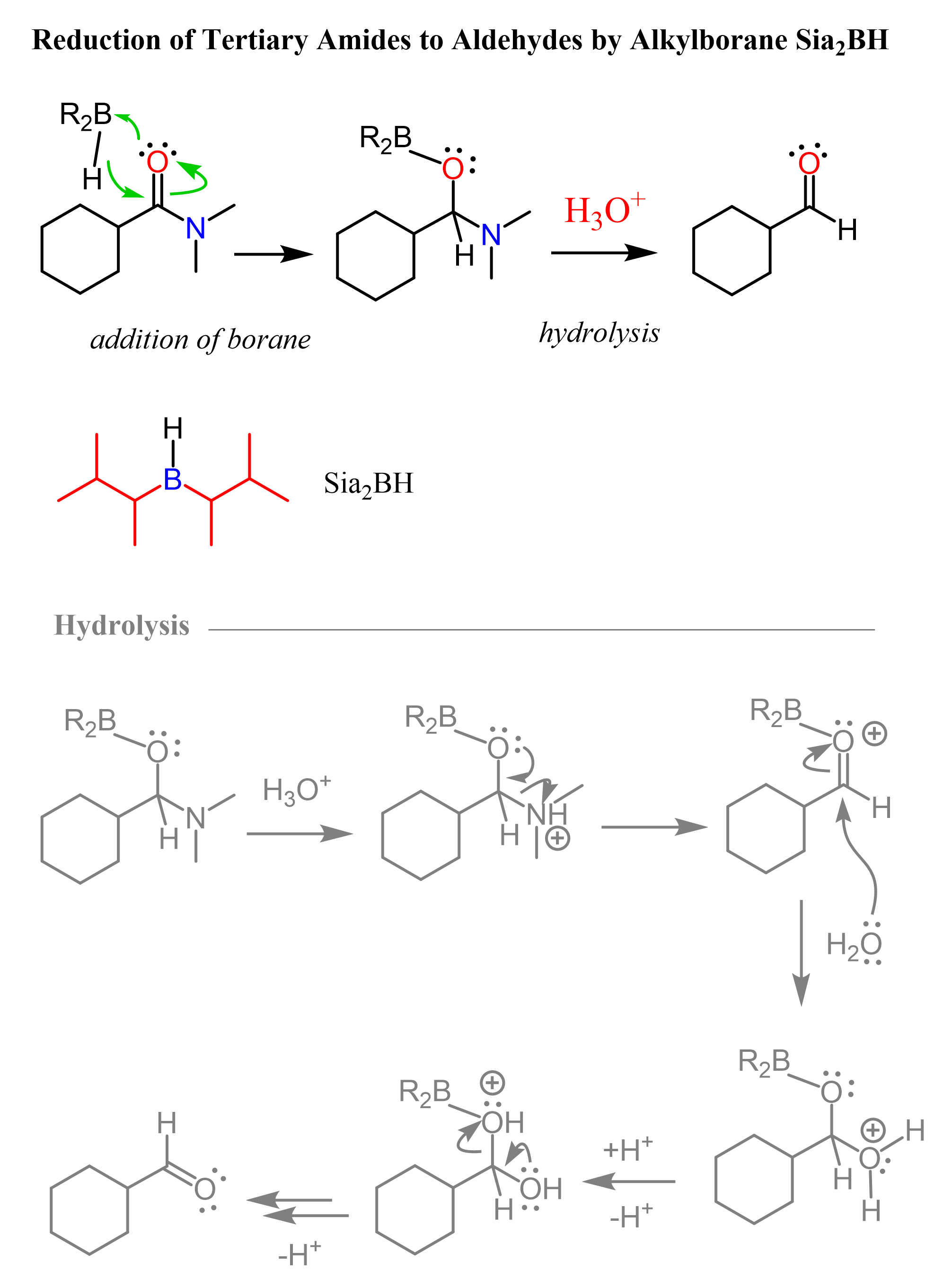
Here is the original article for further reading: Tetrahedron Letters, Vol. 38, No. 10, pp. 1717-1720, 1997.
To summarize, the safe and universally accepted solution for reducing any amides to amines is the use of LiAlH4.
9-BBN and Sia2BH can be used to convert tertiary amides to amines and aldehydes respectively:
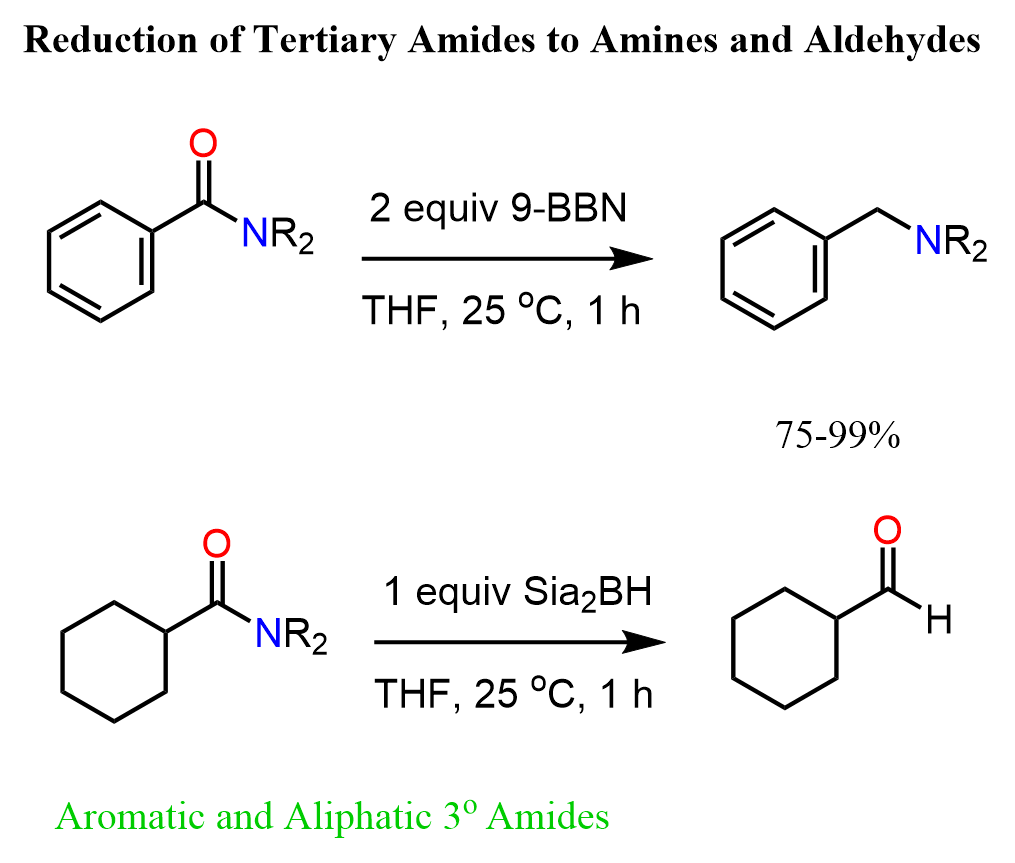
Whether you can use the abovementioned alkyl boranes to reduce tertiary amides to amines and aldehydes is ultimately up to your instructor.
There are other, indirect ways of converting amides to aldehydes which we will discuss in the next article.
Organic Chemistry Reaction Maps
Never struggle again to figure out how to convert an alkyl halide to an alcohol, an alkene to an alkyne, a nitrile to a ketone, a ketone to an aldehyde, and more! The comprehensive powerfull Reaction Maps of organic functional group transformations are here!
Check Also
- Fischer Esterification
- Ester Hydrolysis by Acid and Base-Catalyzed Hydrolysis
- What is Transesterification?
- Esters Reaction with Amines – The Aminolysis Mechanism
- Ester Reactions Summary and Practice Problems
- Preparation of Acyl (Acid) Chlorides (ROCl)
- Reactions of Acid Chlorides (ROCl) with Nucleophiles
- Reaction of Acyl Chlorides with Grignard and Gilman (Organocuprate) Reagents
- Reduction of Acyl Chlorides by LiAlH4, NaBH4, and LiAl(OtBu)3H
- Preparation and Reaction Mechanism of Carboxylic Anhydrides
- Amides – Structure and Reactivity
- Naming Amides
- Amides Hydrolysis: Acid and Base-Catalyzed Mechanism
- Amide Dehydration Mechanism by SOCl2, POCl3, and P2O5
- Amide Reduction Mechanism by LiAlH4
- Amides Preparation and Reactions Summary
- Amides from Carboxylic Acids-DCC and EDC Coupling
- The Mechanism of Nitrile Hydrolysis To Carboxylic Acid
- Nitrile Reduction Mechanism with LiAlH4 and DIBAL to Amine or Aldehyde
- The Mechanism of Grignard and Organolithium Reactions with Nitriles
- Carboxylic Acids to Ketones
- Esters to Ketones
- Carboxylic Acids and Their Derivatives Practice Problems
- Carboxylic Acids and Their Derivatives Quiz

